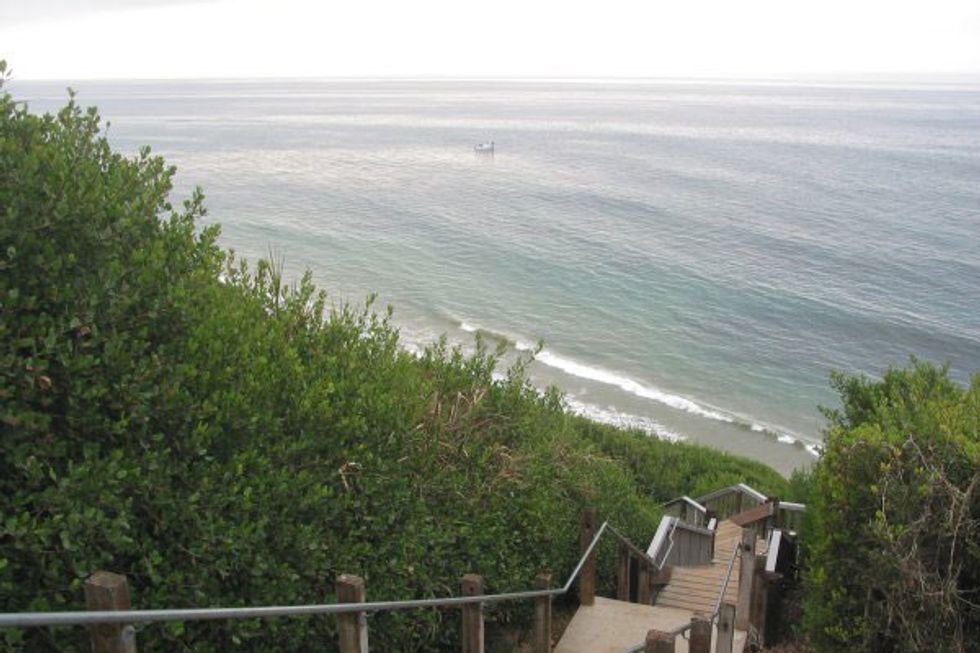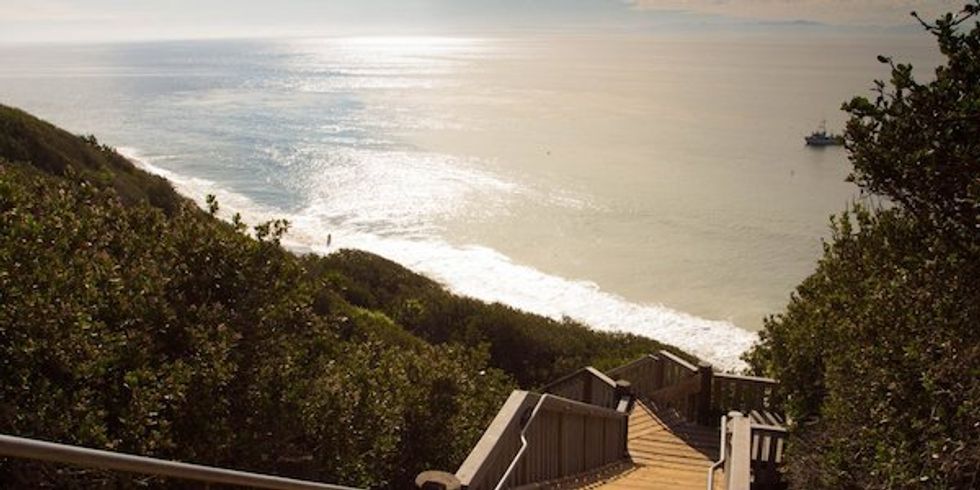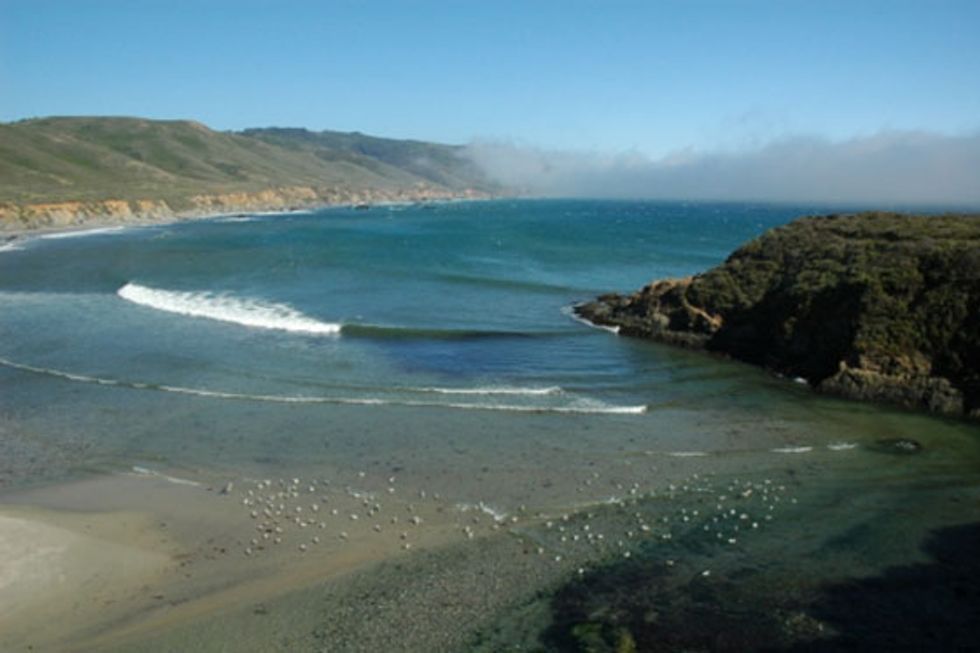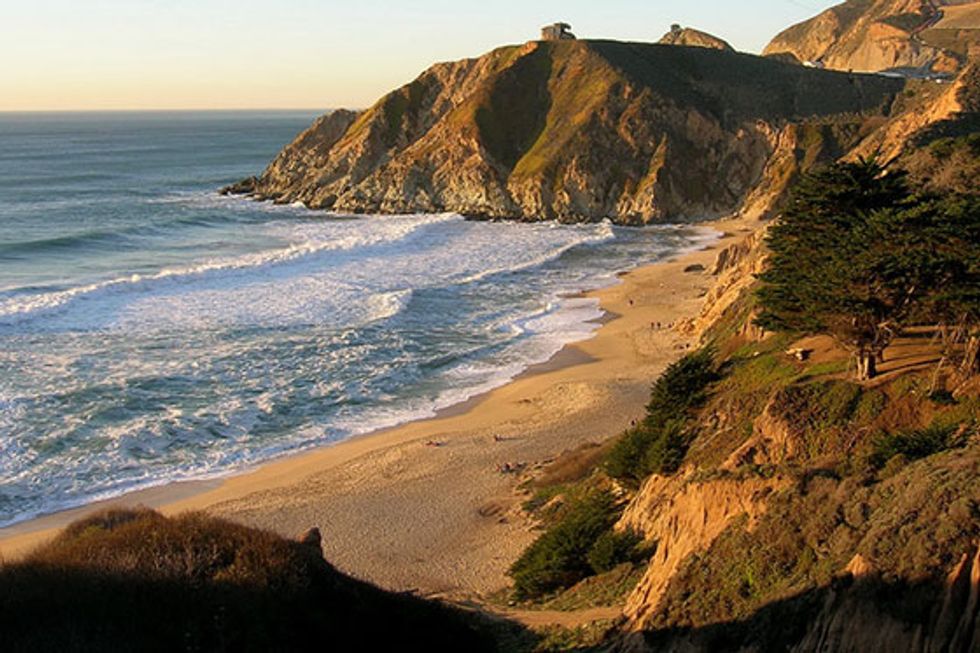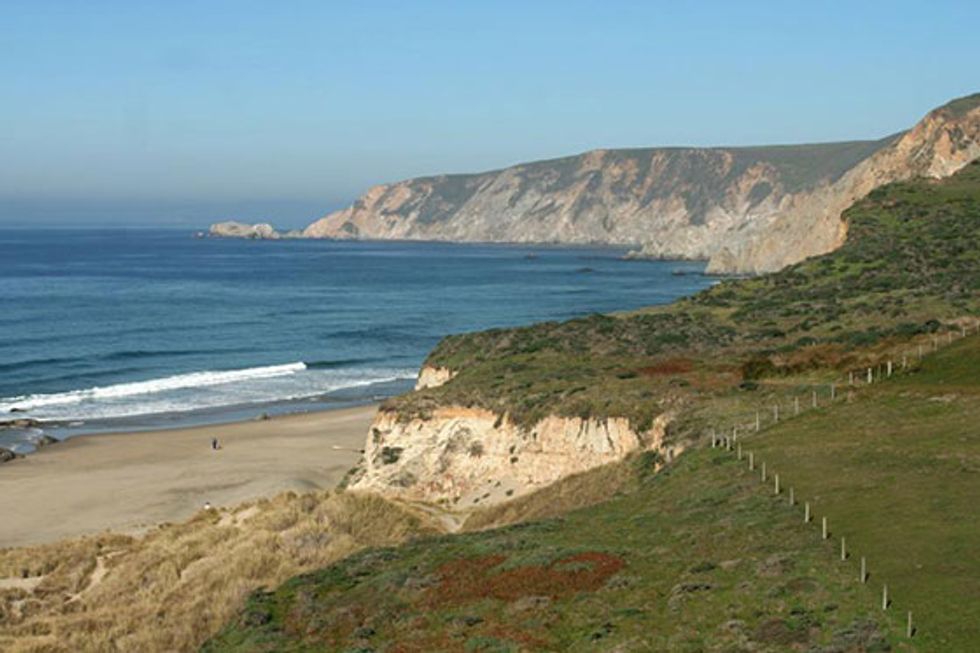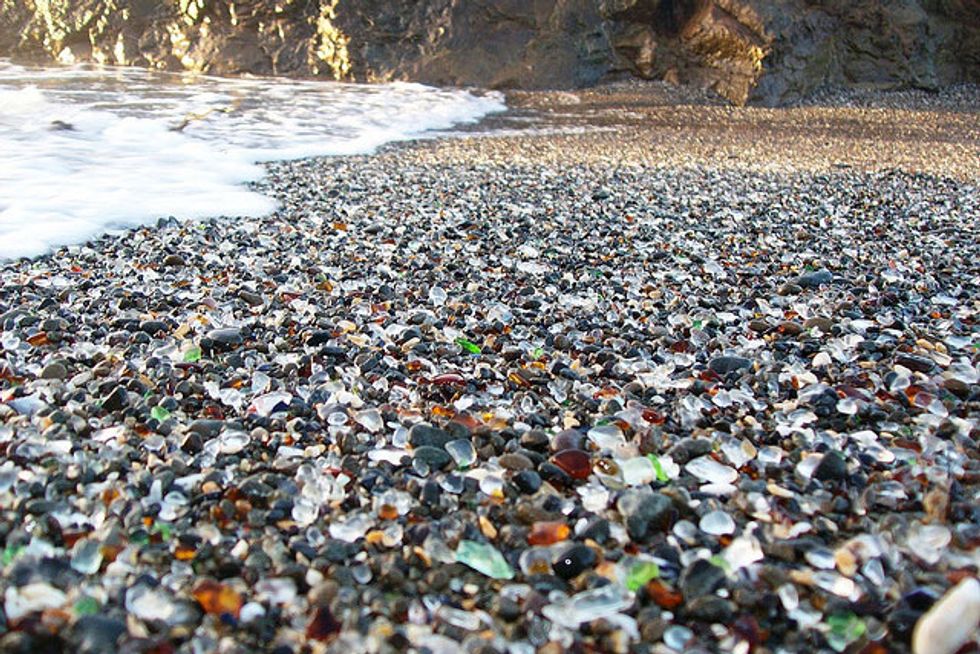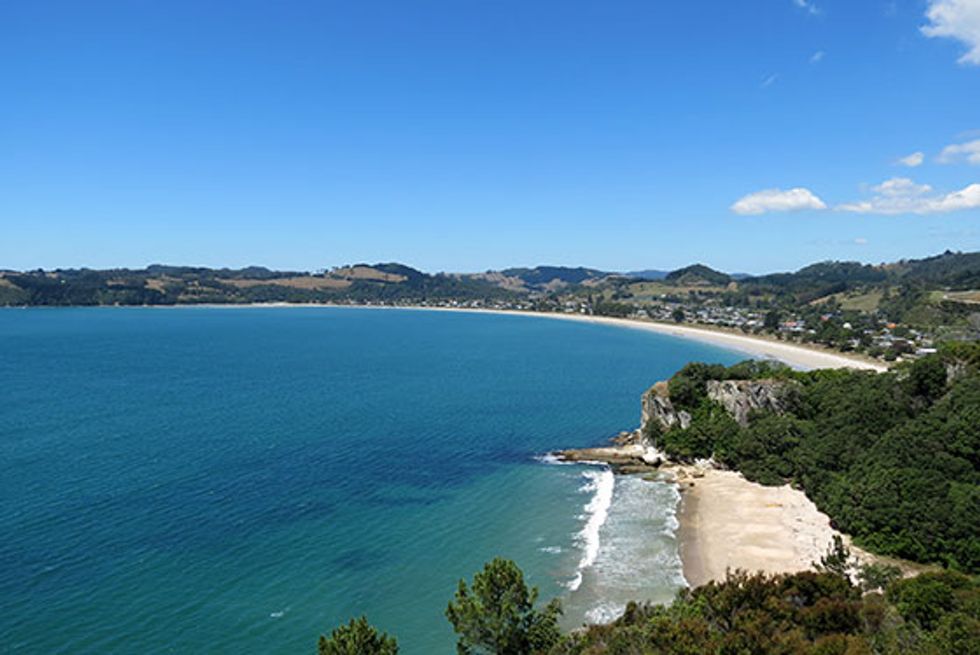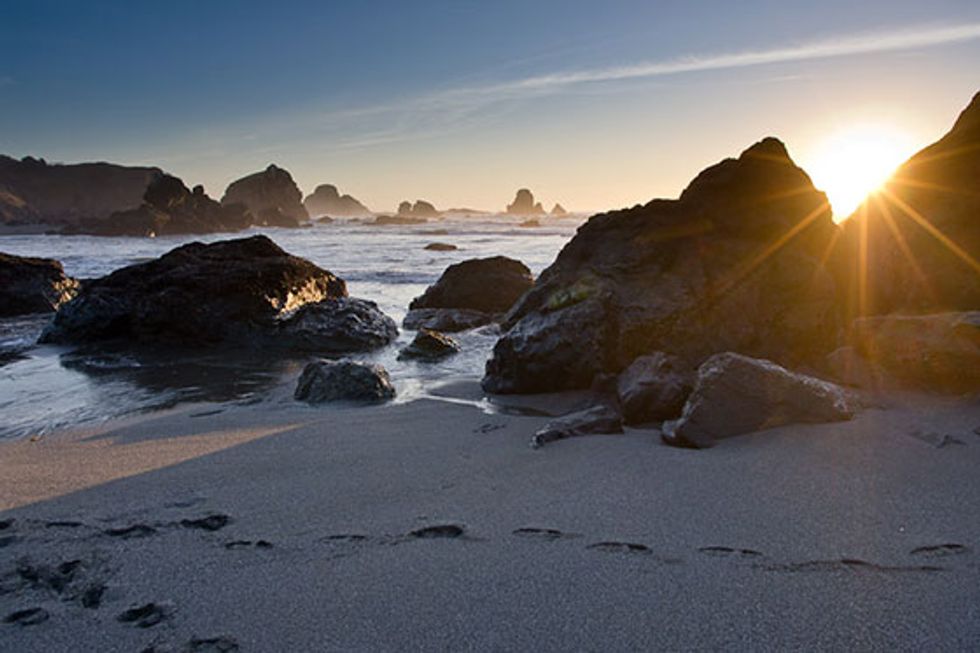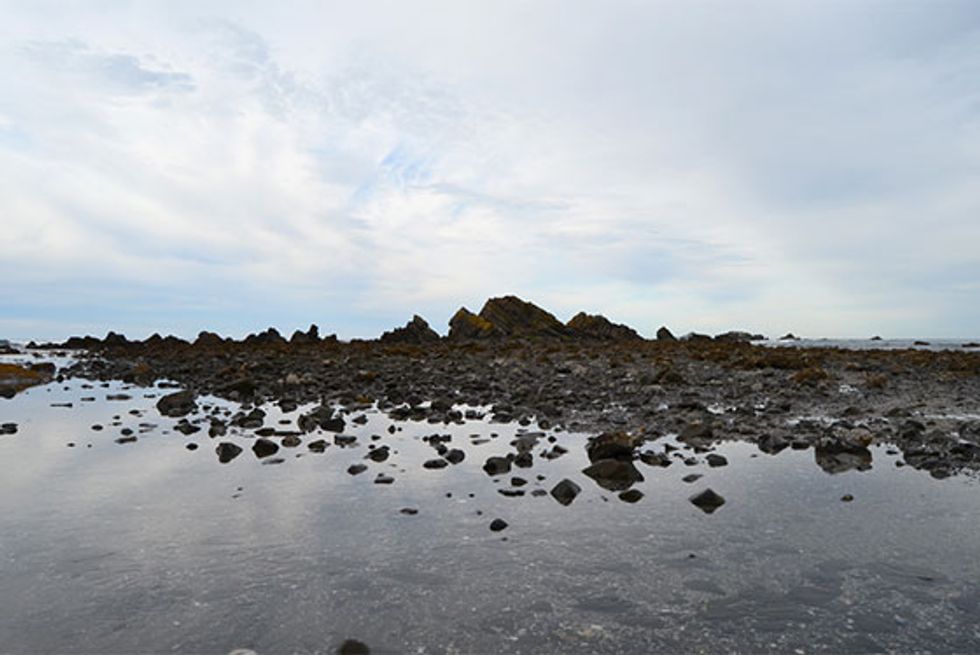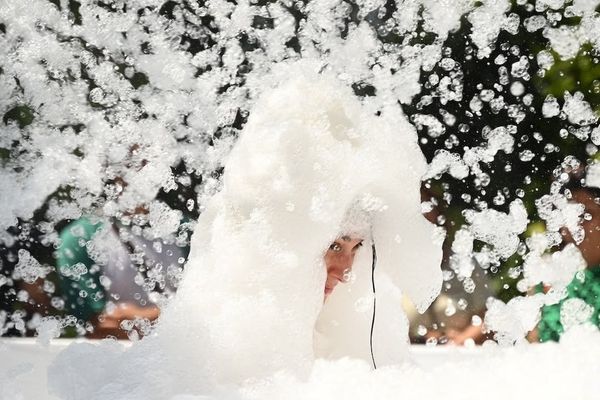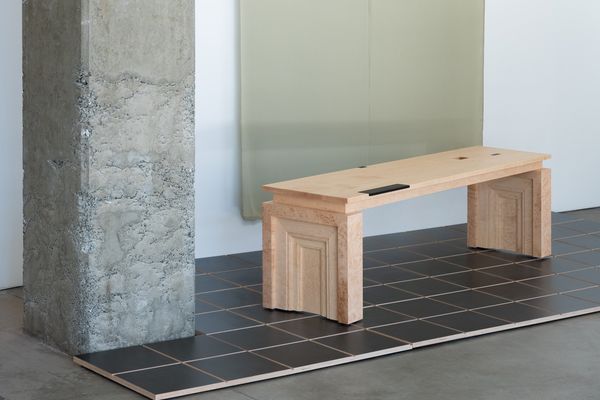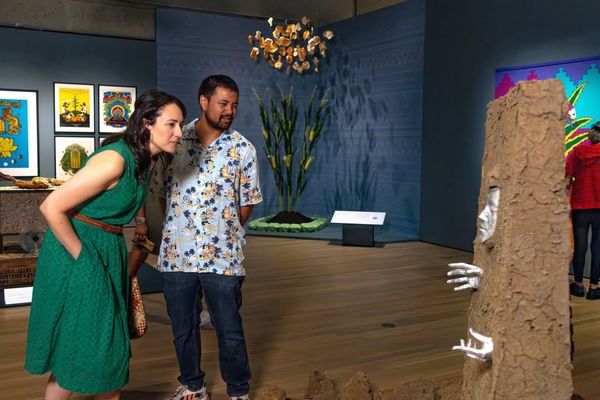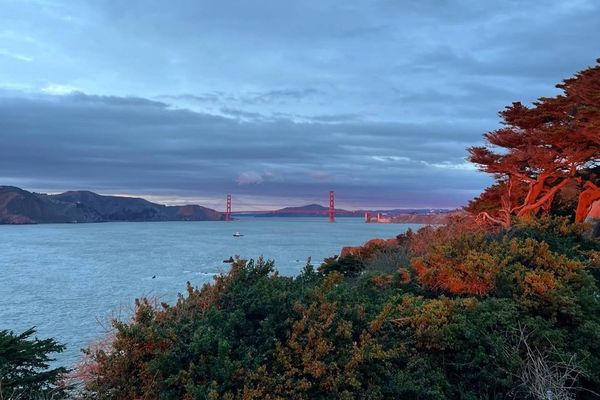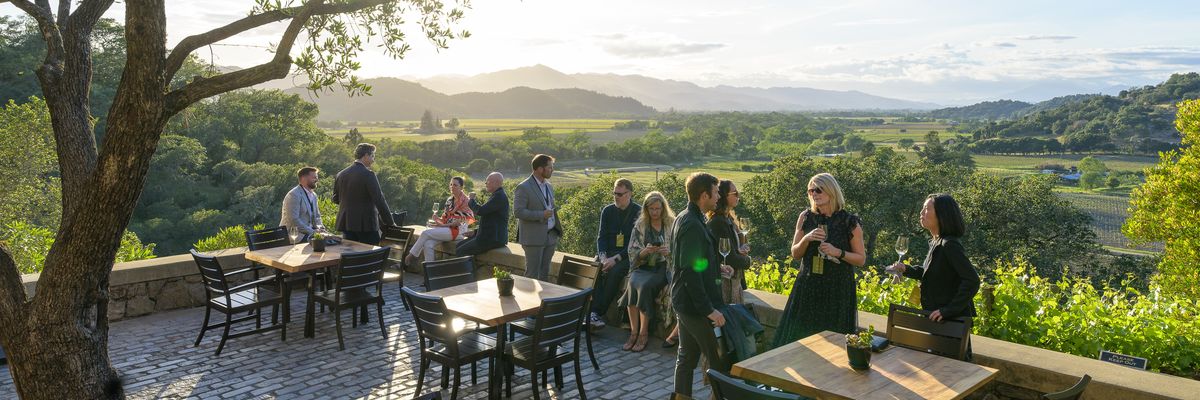Finding a little piece of peace along the California Coast isn't as difficult as it may seem, and the rewards are as infinite as the Pacific horizon.
The stairs to Mesa Lane. (Photo by Jake Jarell)
Mesa Lane is located below the tall bluffs in Santa Barbara. 241 stairs lead to the beach, which makes up a narrow band between the ocean and the cliffs. Be sure you don't go during an an abnormally high tide, or there will be no beach at all! If you come at low tide there is plenty of exploring and walking to do.
Inside Tip: Arrive at low tide if you want a walk on the beach, and at incoming tide if you want to surf
Formed along a curve in the coastline where the Big Sur River meets the mighty Pacific, Andrew Molera State Beach is one of only a handful of accessible beaches along the Big Sur coast. This wild, driftwood-strewn setting offers visitors miles of beach to explore, a diversity of marine life to observe, and a fun right-hand river-mouth and point-break wave.
Inside Tip: The short hike to the beach helps moderate populations, but the long beach and occasionally good right hand wave are worth the walk indeed.
Resting between Pacifica’s San Pedro Point and the tiny town of Montara, Gray Whale Cove is well known to the locals but often missed by travelers on Highway 1. The cove is protected from high winds that often plague a coastline known for its inclement weather. On a clear day when the beach is more popular, Gray Whale can be occupied by many beachgoers, both clothed and nude; otherwise, the beach remains largely uncrowded.
Inside Tip: Be warned, surfing may prove dangerous due to rocks.
Kehoe Beach is the northernmost section of a continuous 12-mile stretch of beach known as the Great Beach, which spans from Point Reyes to the rocky points south of McClures Beach on the Point Reyes National Seashore. A broad, expansive beach cut only by a stream flowing into the ocean, Kehoe is well known for the spring wildflower displays among its sand dunes.
Inside Tip: Follow the short trail, bring your dog (on a leash), and wear a windbreaker for the fog and wind.
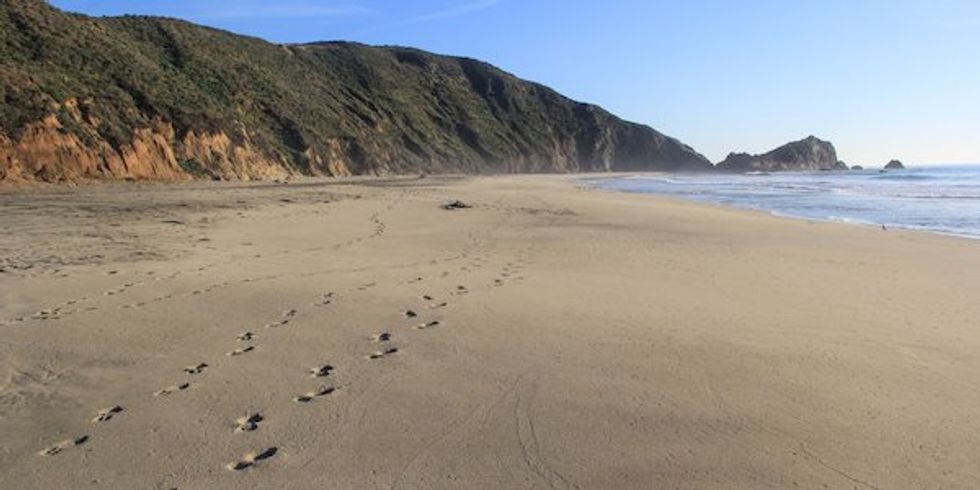
Located at the end of the road near Tomales Point, McClures Beach is the last accessible beach along the northern stretch of the Point Reyes National Seashore. Hidden from the road, McClures Beach is situated in a scenic cove between two rocky headlands. The beach is accessible via a short trail that leads down a coastal scrub-lined canyon.
Inside Tip: Enjoy the tidepooling, but beware of the rocks while you explore.
However charming and remarkable Glass Beach appears now, its history is even more incredible. Throughout the first half of the 20th century, the residents of Fort Bragg hurled their municipal waste off of cliffs and into the ocean. Incredibly, local authorities and the private landowner did nothing to stop this practice until 1967, when the area known as “The Dumps” was officially closed. By that time the beach had been filled with tons of refuse. Over the decades, the Pacific Ocean has churned and tumbled the cast-off glass into beautiful pieces of sea glass. Between erosion from waves and tourists collecting keepsakes, the supply of sea glass is dwindling.
Inside Tip: In addition to the glass, you’ll notice a healthy tide pool population of crabs and sea anemones as well.
A short walk through wind-beaten redwoods and bull pines leads to small cove with a sandy beach. The short trail makes this an ideal beach for packing a picnic and watching the sunset or taking an impromptu trip to the beach as you pass through the area. Before you descend the trail to the beach, spend a few minutes on the bluff overlooking the ocean. Various species of whales are often seen here during their winter migrations, and keep an ear out for the loud barks of sea lions as they come and go from the Fish Rock Rookery located a few miles to the north.
Inside Tip: Stroll through the redwoods to discover this beach. Keep an eye out for whales and an ear out for the sea lions.
Luffenholtz beach is a great place to observe the beauty of the Pacific Ocean while relaxing and exploring one of Northern California's more solitary beach environments. The beach is best during low tide, and visitors should be cautious during high tide as the beach becomes mostly covered by waves.
Inside Tip: Avoid the water when you come to this lonely yet serene beach, but keep you eye out for creatures, by land or by sea.
Point St. George Heritage Area
Point St. George Heritage Area, lying just north of Crescent City, is the third westernmost point in the continental United States. The 340 acres of coastal bluffs and rocky shoreline that jut out to sea provide unparalleled panoramas of the surrounding coastline. Panoramic views of Oregon to the north, the Siskoyou Mountains inland, and the forested bluffs of the Redwood Empire to the south make for a spectacular backdrop against the cool blue Pacific Ocean. Walking trails thread the headlands and provide access to the beaches and scenic overlooks before connecting to additional trails that explore the adjacent Tolowa Dunes State Park and a network of coastal lakes and lagoons.
Inside Tip: Tall bluffs and a far western prominence make this an ideal spot for spotting migrating whales along with other sea life. Look for the Saint George Reef Lighthouse standing tall offshore. Head north from Point St. George to access secluded Kellogg Beach.



